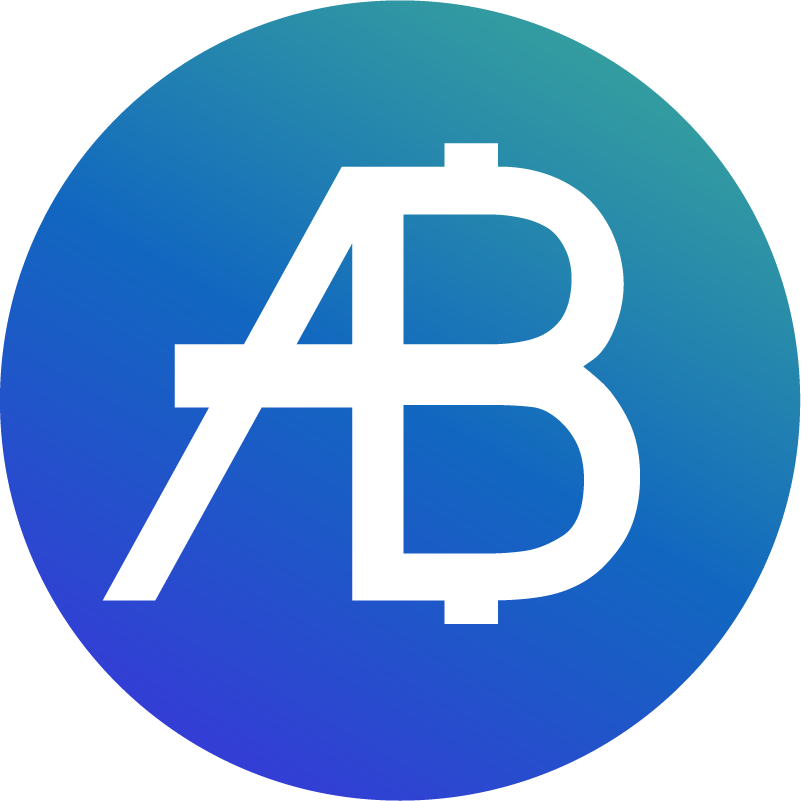First-Ever Sui-Based ETF Approved: 21Shares Launches 2× Leveraged SUI Fund on Nasdaq
Sui just made its debut on Wall Street. On December 4, 2025, 21Shares launched the first-ever exchange-traded fund tied to the Sui blockchain, with the 2× Long SUI ETF (ticker: TXXS) now live on Nasdaq. Approved by the U.S. Securities and Exchange Commission (SEC), the leveraged fund is designed to deliver twice the daily performance of the SUI token—making it the first regulated Sui-based ETF available to U.S. investors.
Unlike spot ETFs that hold crypto directly, TXXS uses derivatives to track and amplify Sui’s price movements. The launch marks a major step forward not just for 21Shares, but for the Sui ecosystem, which has quickly gained traction as one of the fastest-growing Layer-1 blockchains. With this product, retail and institutional traders alike can gain leveraged exposure to SUI through a traditional brokerage account—no wallets, private keys, or exchanges required.
A First of Its Kind — and a First for Sui
TXXS isn’t just Sui’s first ETF—it’s the first-ever ETF tied to Sui to launch in leveraged form. That’s a rarity in crypto space. Most major Layer-1 networks, including Ethereum and Solana, entered public markets through spot or futures-based ETFs before leveraged versions came later. With Sui, the market flipped the script. Its ETF debut delivers 2× daily price exposure right out of the gate, signaling strong issuer conviction and an appetite for amplified strategies tied to emerging chains.
The timing is equally significant. Crypto ETFs are booming in 2025, with more than 70 launched so far this year and Bloomberg forecasting over 150 by year’s end. Yet, few have ventured beyond the typical BTC and ETH pairings. TXXS puts Sui on the ETF map—and fast-tracks it into the realm of regulated, mainstream-accessible digital assets. For a network that launched just two years ago, this kind of Wall Street entrance is anything but ordinary.
How TXXS Works — A Primer on Leveraged Crypto Exposure
TXXS is a 2× leveraged ETF, which means it’s engineered to deliver twice the daily return of the SUI token’s price movement—but only on a day-to-day basis. If SUI gains 5% in a trading session, TXXS aims to gain 10%. But if SUI drops 3%, the fund would target a 6% decline. This amplified exposure is made possible through a combination of derivatives contracts, including swaps and futures, rather than direct SUI holdings.
Crucially, leveraged ETFs like TXXS reset daily, which makes them tools for short-term trading, not long-term holding. Over multiple days, compounding effects can cause the fund’s performance to diverge from exactly 2× the token’s net price change. That’s why issuers and analysts alike emphasize that leveraged products are best suited for experienced traders looking to capture short-term momentum—not passive investors hoping to ride a long-term uptrend.
Still, the appeal is clear: TXXS allows exposure to Sui’s price action without requiring a crypto wallet, exchange account, or margin facility. It offers traders a simplified, regulated way to bet on SUI volatility, and for many, that accessibility outweighs the risks.
“A Vote of Confidence”: Industry Applauds Sui’s ETF Launch
The launch of TXXS has sparked immediate reaction from across the crypto and financial sectors. For 21Shares, the milestone reinforces its lead in bringing structured crypto products to regulated markets. “Widespread adoption of digital assets hinges on the market’s ability to offer consumers uncomplicated applications of the technology,” said Russell Barlow, CEO of 21Shares. “With this launch, 21Shares is capitalizing on one of the winners rising to the occasion and ushering in the next era of blockchain technology—one dominated by simplicity.”
Sui’s leadership echoed the enthusiasm. Evan Cheng, CEO of Mysten Labs, called the listing a sign that Sui is “ready for its place in capital markets.” For Cheng and others in the Sui ecosystem, TXXS marks more than just a product debut—it’s institutional validation. Bloomberg ETF analyst Eric Balchunas noted that it’s rare for an asset’s first ETF to be a leveraged one, calling TXXS “a bold move” that reflects rising confidence in Sui’s long-term positioning in the market.
More Than a Milestone: TXXS Signals Maturity for the Sui Network
The approval of TXXS represents more than just the launch of a new trading product—it’s a sign that the Sui ecosystem is entering a new phase of maturity. Since its launch in 2023, Sui has carved out a distinct position among Layer-1 blockchains with a focus on performance, usability, and developer experience. Its architecture supports parallel transaction execution, object-oriented smart contracts, and seamless onboarding features like Google or Face ID login. Combined with sponsored transactions that let apps cover user gas fees, Sui aims to make blockchain feel invisible to the end user.
That mission is gaining traction. The network recently crossed $10 billion in 30-day DEX volume and has maintained over $180 billion in monthly stablecoin transfer volume for four straight months. Its total value locked (TVL) sits just shy of $1 billion, ranking Sui among the top 15 blockchains by ecosystem size. From DeFi protocols to gaming platforms and tokenized real-world assets, builders are finding new use cases across the Sui stack.
With TXXS now trading on Nasdaq, Sui is no longer confined to the crypto-native crowd. The fund gives traditional investors a regulated, brokerage-accessible way to gain exposure to Sui’s growth—without needing a wallet or token. For the ecosystem, that means more visibility, more liquidity, and a new bridge between on-chain innovation and off-chain capital.
Why TXXS Passed While Spot SUI ETFs Still Wait in Line
TXXS arrives at a moment when U.S. regulators are cautiously expanding the boundaries of crypto-based investment products. Its approval is particularly notable given the SEC’s recent decision to block the launch of several proposed 3× and 5× leveraged crypto ETFs, citing concerns over portfolio structure and risk exposure. For now, the agency appears comfortable drawing the line at 2× leverage, provided the fund follows strict compliance under Rule 18f‑4 and avoids loopholes.
That distinction is what gave TXXS a faster track than 21Shares’ pending spot SUI ETF. Unlike spot products, which require custodianship of the actual crypto asset and often draw more regulatory scrutiny, TXXS uses derivatives—such as swaps and futures—to simulate exposure to SUI. This structure makes it easier to meet SEC standards for market surveillance and investor protection.
While the leveraged ETF is now live, the spot version remains in review, with no timeline yet for approval. Still, TXXS may help build a regulatory foundation for future Sui-based products. If the fund performs well and market interest holds, it could increase the odds that the SEC gives a green light to a spot SUI ETF next.
Market Impact and the Road Ahead
Sui (SUI) Price
Source: CoinMarketCap
The launch of TXXS comes at a pivotal time for SUI’s price action. After declining steadily through the fall—slipping from above $3.00 in September to around $1.30 in late November—the token has shown signs of a rebound. Following the ETF announcement, SUI climbed back into the $1.60–$1.70 range, marking a roughly 8% gain on the week. While the move has yet to break the broader downtrend, traders appear cautiously optimistic that the ETF could serve as a fresh catalyst.
The real test, however, may come in the weeks ahead. Leveraged ETFs tend to attract active, high-frequency traders, and TXXS could bring new volatility into Sui’s market. Amplified gains are possible—but so are sharper losses on red days. If trading volume in TXXS proves strong, it may signal growing appetite for Sui exposure in traditional portfolios. If not, the fund may face the same uphill battle as other low-liquidity altcoin ETFs.
Analysts agree that TXXS won’t move the market on its own, but it does offer something new: a bridge between Sui’s on-chain growth and off-chain capital. For an ecosystem pushing toward mainstream adoption, that’s a critical step—and one that could open the door for a broader suite of Sui-based financial products.
What Comes Next for Sui and Crypto ETFs
With TXXS now live on Nasdaq, Sui joins a small but growing group of Layer-1 networks that have made the leap into regulated financial markets. While this debut comes via a leveraged product—not a spot fund—it still marks a significant step toward broader accessibility and institutional legitimacy.
Looking ahead, much will depend on market reception. If the ETF garners strong demand and trading volume, it could pave the way for more Sui-based investment vehicles, including the still-pending spot SUI ETF filed by 21Shares earlier this year. More broadly, TXXS may help validate Sui’s potential as a high-performance blockchain with staying power—not just in DeFi, but on Wall Street as well.
For now, the launch offers both investors and builders something rare: a regulated, brokerage-accessible way to participate in the growth of a next-gen Layer-1. And in an industry where visibility and access are everything, that could make all the difference.
Disclaimer: The opinions expressed in this article are for informational purposes only. This article does not constitute an endorsement of any of the products and services discussed or investment, financial, or trading advice. Qualified professionals should be consulted prior to making financial decisions.
Bitget Academy2025-12-05 09:22















































































![BitTorrent [New]](https://img.bgstatic.com/multiLang/coinPriceLogo/c87b5c29752b2123cca40f4dd2c6b6501710522527061.png)






























































